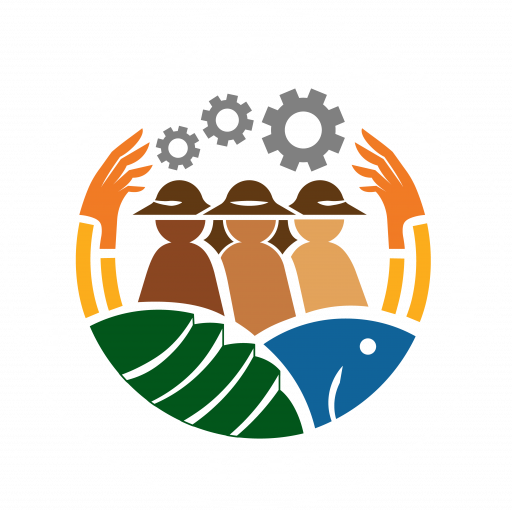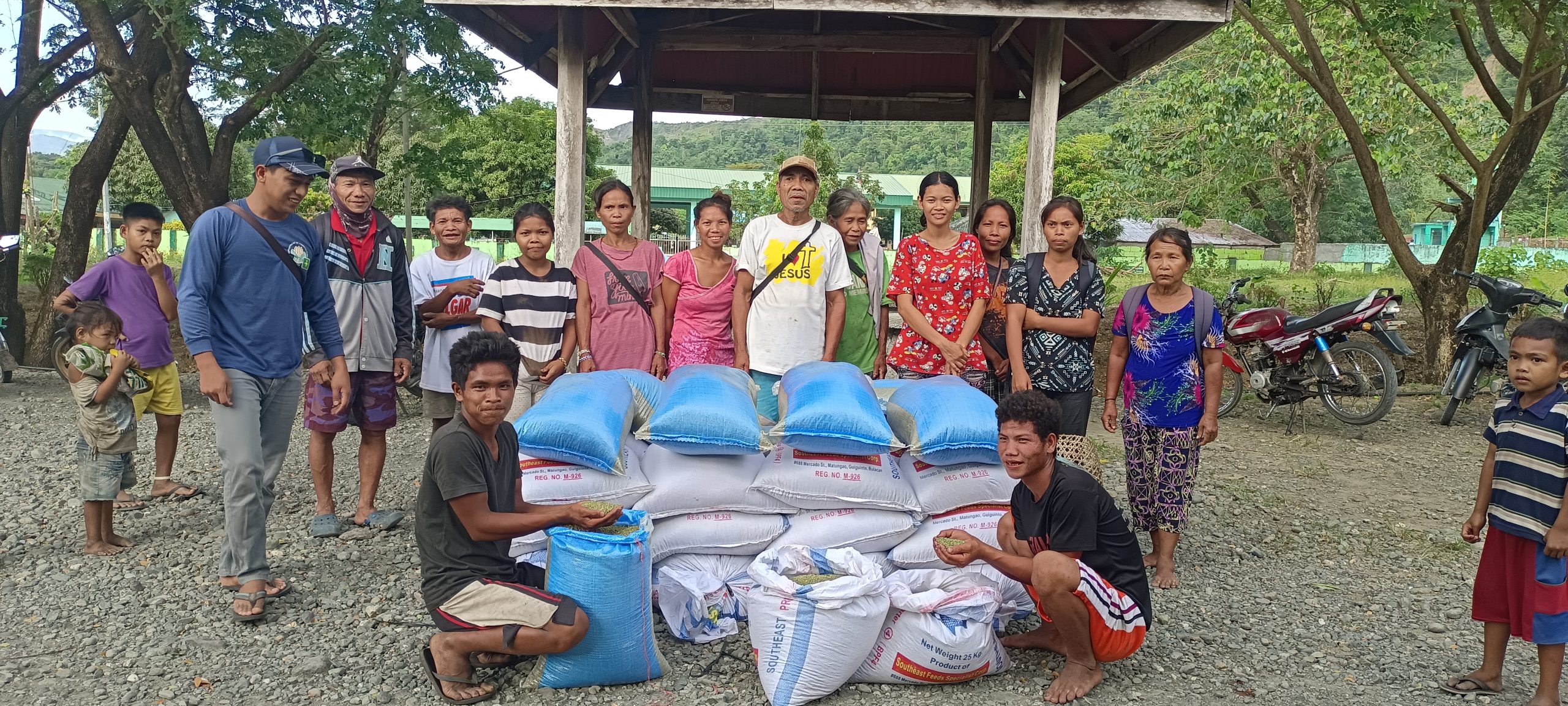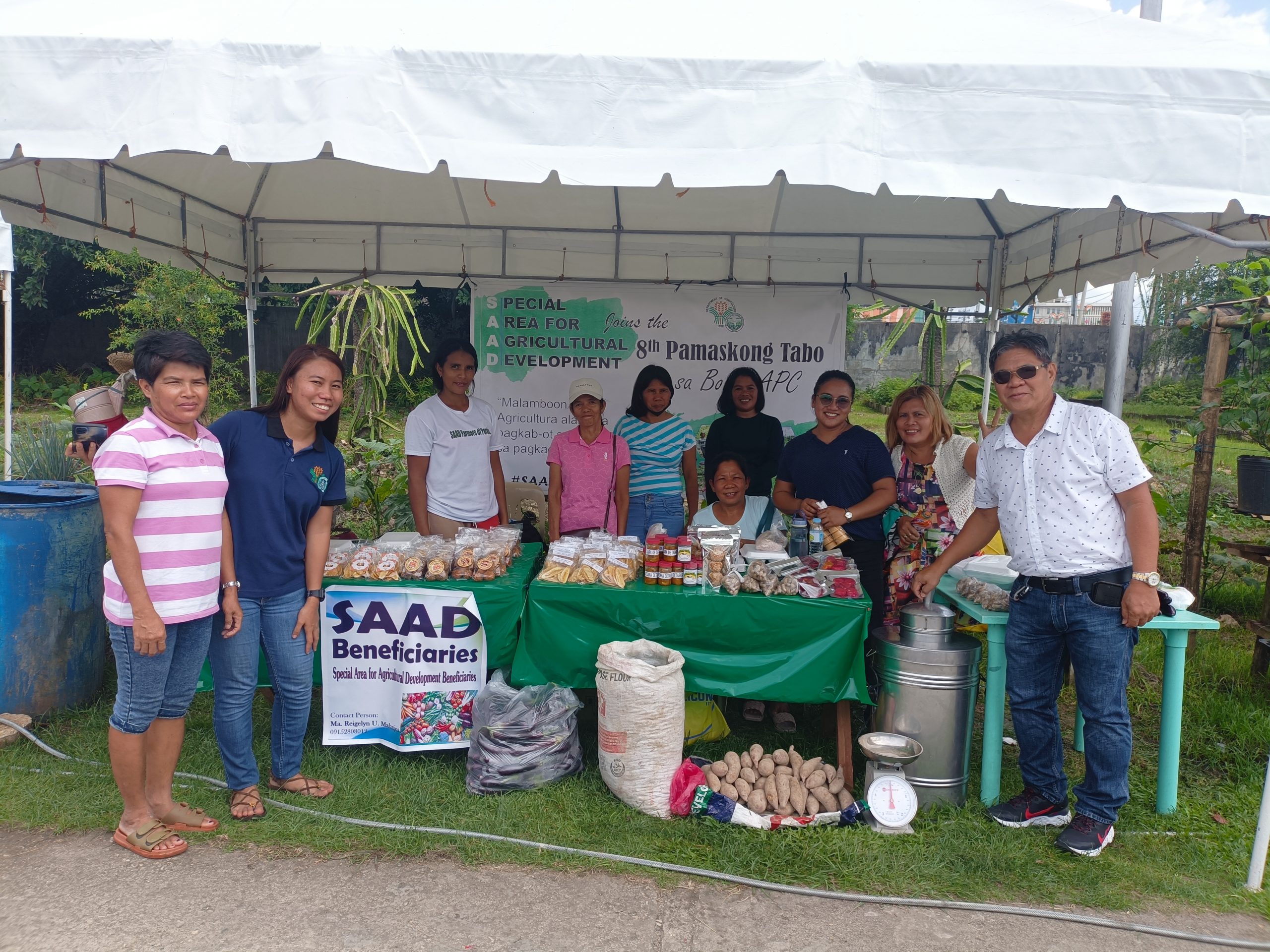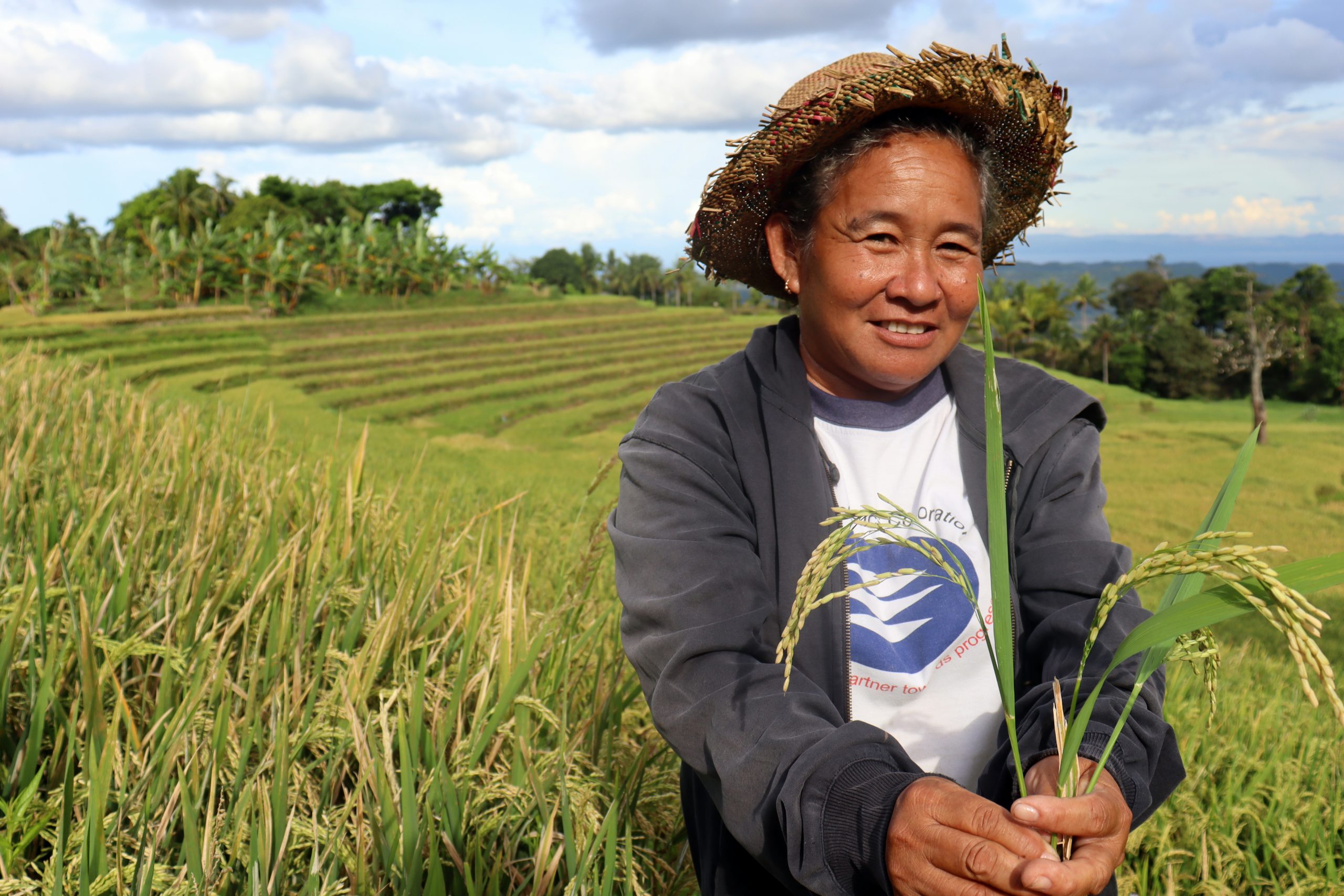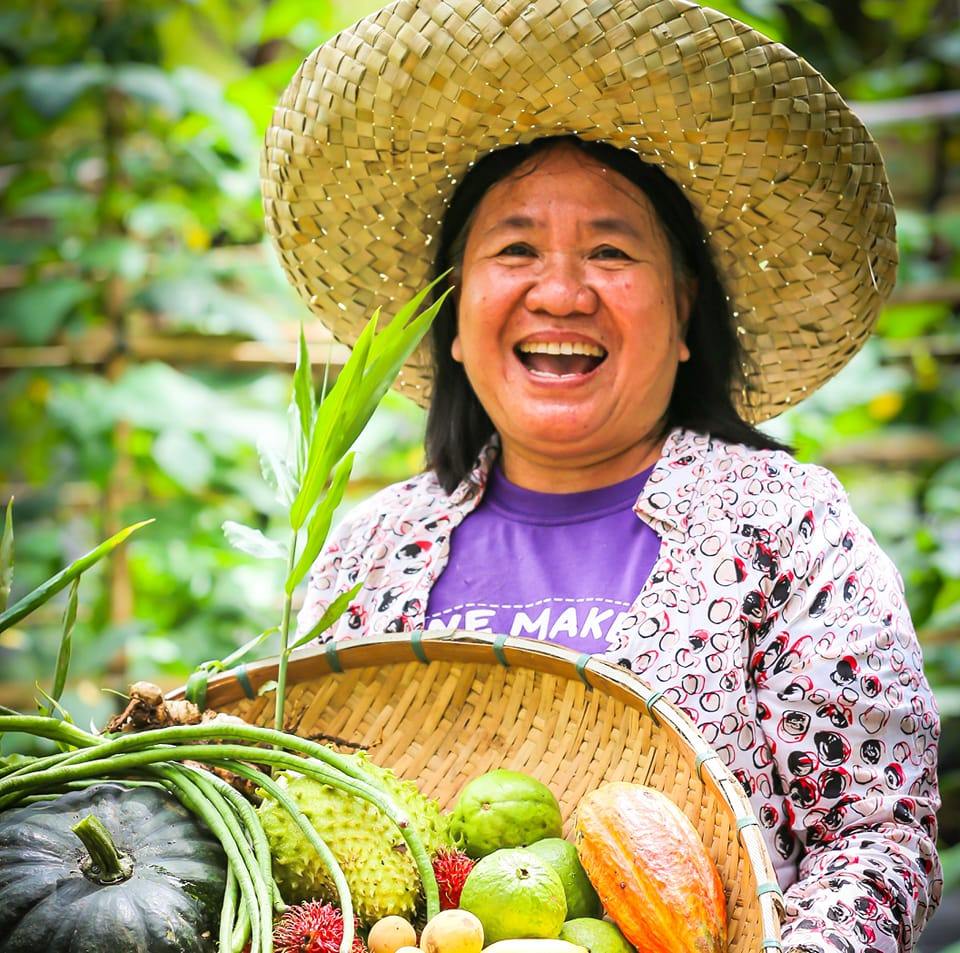NEGROS OCCIDENTAL, September 19, 2022 – Oyster mushrooms are shaking up the agribusiness trend, sprouting up as the primary ingredient in a myriad of products across numerous categories, ranging from shelf-stable packaged food and drink to refrigerated alternative meats and dairy. Many novel value-added products can be prepared with mushrooms like powder, pickles, chips, ketchup, noodles, pasta, biscuits, among others.
With the gradual demand for mushrooms due to the public’s increasing awareness of its health and economic benefits, the Special Area for Agricultural Development (SAAD) Program awarded mushroom production projects in its covered areas in Negros Occidental as part of the Department of Agriculture’s (DA) efforts to improve food security and economic growth in rural areas.
Recently, SAAD regional and provincial implementers trained 30 farmers from five (5) farmers associations (FAs) in Salvador Benedicto in a bid to increase local production of pure culture quality mushrooms through low-cost and adaptive propagation techniques.
The successful completion of the two (2) batches of training occurred in five separate sessions from August 25, 30, 31, and September 13, 14, 2022.
According to Mr. Bryan Capunong, the SAAD Area Coordinator of Salvador Benedicto, the series of activities gathered 6 members each from the Farmers’ Association of Barangay Igmaya-an (FABI), Pandanon Integrated Balangon Farmworkers’ Association, Inc. (PIBFA), Tribu Bukidnon Barangay Bago Farmers’ Association (TBBBFA), Benejewan Integrated Social Forestry Farmers’ Association (BISFFA), and Kumaliskis Integrated Social Forestry Farmers’ Association (KISFFA), with a total count of 30.
These FAs with a total consolidated production area of 0.5 hectares were selected as recipients of SAAD FY 2022 Mushroom Production Projects worth Php 1,714,000. They relatively depend on planting backyard vegetables such as eggplant, tomato, okra, and squash, among others as their main source of living. Read the beneficiaries’ livelihood background here https://bit.ly/3xvrWlX.
Mushroom experts who shared their expertise during the training were Mr. Francis Capino and Ms. Myrtle Ferasol from DA 6 Research Division, Mr. Justine Delgado and Aron John Joame from the University of the Philippines Los Baños Research and Training Station – La Granja, and Ms. Marivel Sequian and Pedrito Dela Torre Jr. from the Office of the Provincial Agriculturist – Negros Occidental.
Grain spawn preparation for Oyster Mushroom
The oyster mushroom (Pleurotus spp.) is an edible mushroom having a cap, which resembles an oyster shell. Considered technically a vegetable, it is known that mushrooms presently rank above all vegetables and legumes (except soybean) in protein content and have significant levels of B and C vitamins, minerals, and are low in fat.
Grain spawn can be thought of like “seeds” in mushroom cultivation. It is made by starting from either spores or a mushroom culture, which is then transferred to sterilized grain. The basic material in grain spawn is sorghum or corn grits which were provided for the participants. They were taught to wash grains thoroughly and discard all floating seeds before boiling them for at least 20-25 minutes. Seeds were then collected using a strainer to drain the water and spread out on a clean piece of paper to absorb the excess water.
Mr. Capino said every process should involve thorough sanitation to prevent contamination. He instructed farmers to transfer the boiled grains into a round bottle, plug it with cotton waste, and cover it with clean paper. Bottled grains were also sterilized at 15 per square inch for one hour. When cooled, pure culture stubs of oyster mushroom were inoculated in the sterilized bottled grains which are set to be inoculated to the sterilized fruiting bags.
Preparation of substrates and fruiting bags
According to Mr. Dela Torre, farmers need to make sure that they’re using the correct substrate and fruiting bag to successfully grow mushrooms.
He explained that using a substrate to grow mushrooms is the equivalent of using soil to grow plants. It’s where the mushrooms will get all of their nutrients while growing.
“There are a variety of different substrates that growers use. Different species of mushrooms have their own preferences. So it’s important to match your mushrooms with the correct substrate to have the best chance of success,” Mr. Dela Torre.
Common substrate recipes for growing mushrooms usually involve straw or hardwood sawdust, although there are many other good options to be considered such as rice bran, and banana stalks.
Mushroom fruiting bags, meanwhile, should be made of high-grade polypropylene plastic that can withstand high temperatures. These grow bags, designed to hold an inoculated substrate, can be hung up allowing farmers to cut holes into all sides and have mushrooms grow out in every direction.
a) Mixing and fermentation of substrate materials – participants combined rice bran (20%), molasses (1%), lime (1%), and sawdust (78%). They then moistened and piled the mixture into a heap with a moisture content of about 60%. Polypropylene plastic (PP) bags of 6 x 12 inches were filled with 1 kilogram of fermented substrate materials in the PP bags and then compressed. To minimize the entry of water during steaming or pasteurization, a Polyvinyl chloride (PVC) pipe neck (1-inch diameter) was attached to the bag, plugged with cotton waste, and covered with clean paper or plastic cap.
b) Pasteurization – fruiting bags are steamed in a steel drum for 6-8 hours before cooling down. After steaming, each bag was inoculated with the grain spawn in a clean and aseptic place.
Farmers were instructed to shake the grain spawn bottle to loosen the grains, remove the plug and flame the mouth of the bottle and pour some grains into the bags. The neck area of fruiting bags was slightly shaken to evenly distribute the grains in the shoulder area of the bags.
c) Incubation – Mr. Delgado instructed farmers to keep the spawned bags in a dry and ventilated room for at least 30-45 days.
“If within five days of incubation and no growth appears, the spawn is dead or the substrate is too dry. The bag could be contaminated with other microorganisms,” he said.
He also said that mycelium will fill the bags in 20-30 days, which means the bags are ready for fruit initiation. Farmers should open the bags 1-2 weeks after the bag is totally covered with mycelium (rootlike structure of fungi).
“This is to make sure that the mycelium is matured enough to fruit. Inoculated bags could be piled and incubated directly in a growing house provided the house will remain dry to obtain the required incubation time,” Mr. Delgado explained.
Opportunities for Mushroom
Cultivating mushrooms can provide farmers with a sustainable income. According to Mrs. Sequian, farmers can generate revenue per year if they also grow mushrooms and use the rice straw from their paddy fields as a growing medium. Instead of burning the rice straw, it can be used to produce mushrooms that will not only save the environment through the lessening of agricultural wastes (like rice straw, dried banana leaves, rice hull, and sawdust) but can also help farmers reduce production costs.
Mushrooms are not just produced and sold raw; growers can make products out of harvested mushrooms and can get truly creative with innovating. One could earn more through mushroom processing like producing burger patties, chicharon (crisp), chili paste, tocino, jam, candy, instant soup mix, embutido, longganisa, adobo, curry, bagoong, tocino, and laing using the mushrooms that they cultivate. ###
Writer: Christ John Gamarcha, DA-SAAD 6 Information Officer
